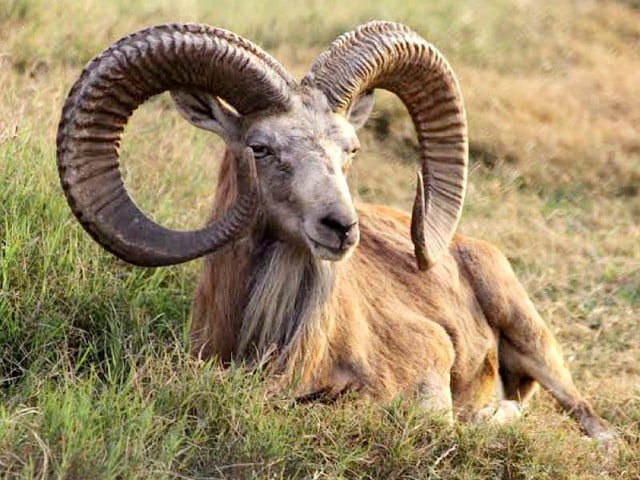Urial trophy hunting triggers controversy
While some believe practice can curb illegal killings, others argue it will only further diminish wild population

For a country drowning in debt, the trophy hunting of rare mammals like the urial is a valuable opportunity for generating income. However, in this tactful truce between keen hunters and the pliant government, the urial becomes nothing more than a stack of cash on four legs.
During the past 12 years, Punjab Wildlife has issued 16 permits for the trophy hunting of urial, with apparently 80 per cent of the proceeds directed to local community-based organizations (CBOs), which utilize the funds for the conservation, protection, and welfare of the urial population.
Despite the Ministry of Climate Change and Environmental Coordination allocating a quota for urial trophy hunting, the practice remains dormant due to the non-registration of Community-Based Conservancies (CBCs), as part of a new model, under which 20 zones were established, tailored to the habitats of the urial. Unfortunately, no CBCs have been registered in Punjab to date, leading to concerns of illegal hunting.
“The urial population is at risk of rampant illegal hunting. The primary obstacle to trophy hunting is the new set of rules implemented by Punjab Wildlife which has abolished previously registered CBOs. Apart from preserving the population of urial, promoting wildlife tourism in Punjab can also generate significant foreign exchange earnings, as seen in countries like South Africa, which rake in billions of dollars annually,” claimed Bader Munir, a wildlife expert and Former Chairman of the Task Force for Wildlife Punjab, who believed that previous regulations were effective, under which the CBOs successfully contributed to the growing population of urial.
According to data obtained from Wildlife Punjab, trophy hunting of urial carried out during 2018, 2020, 2021 and 2022, generated a combined revenue of approximately 1.18 million US dollars while the population of urial found in the Salt Range also purportedly doubled in numbers, with 3,700 identified in 2018 and 6,891 spotted in 2023.
However, organizations advocating for animal rights have expressed their skepticism regarding the reported increase in the urial population, on the grounds that if the population had genuinely multiplied, the Ministry of Climate Change would have announced a corresponding increase in the trophy hunting quota.
Notably, ten years ago, when the estimated population of urial was 1,500, the quota stood at 16 and even today, despite the population growth to almost 6,000, the quota has remained unchanged. Hence, wildlife enthusiasts have argued that overhunting has actually led to a decline in numbers, which the department has obscured through misleading statistics.
Fahad Malik, Head of the Mission Awareness Foundation (MAF), advocated for a complete ban on all forms of wildlife hunting, whether legal or illegal. “The wildlife authorities' policy of legalizing hunting has already inflicted significant harm on wildlife. Historically, hunting served as a means for obtaining food, but regrettably, it has devolved into a sports activity,” said Malik.
Conversely, speaking to the Express Tribune on the matter, Mudassar Hasan, Project Director of Wildlife Punjab, clarified to The Express Tribune that the trophy hunting schedule had been delayed due to the pending registration of Community-Based Conservancies (CBCs).
Dismissing concerns, Hasan stated that the notion that illegal hunting had surged due to cumbersome legal procedures or the absence of trophy hunting, was unfounded.



















COMMENTS
Comments are moderated and generally will be posted if they are on-topic and not abusive.
For more information, please see our Comments FAQ